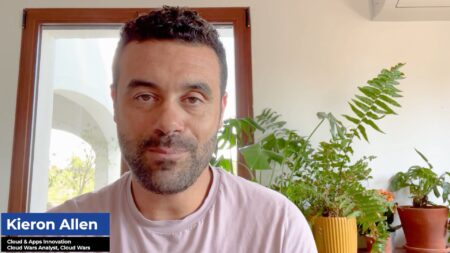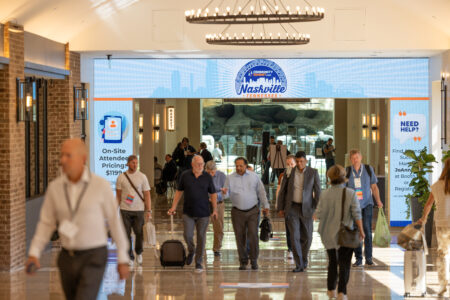Burnout is becoming a real concern across the software and cybersecurity industry. Still grappling with the new digital pressures spurred by the pandemic and faced with less free time amid an ongoing tech talent drought, even in the face of layoffs in other areas, many engineers report being overwhelmed and over-assigned. Other elements like unnecessary toil and legacy tech debt can decrease morale, too. As a result, developers are increasingly open to leaving their positions.
Burnout is especially alarming in cybersecurity, where alert fatigue and human error can lead to severe breaches that degrade a company’s image. Nearly half of cybersecurity incident responders have experienced burnout or extreme stress levels in the past year, according to recent study.
I recently talked with David Bennett, CEO of object-based storage backup startup Object First about the role that burnout plays in today’s tech landscape as well as what causes it and what possible solutions there may be.
Burnout’s Main Causes
The last couple of years has seen significant shifts in how people work and operate. First and foremost, the pandemic forced most knowledge workers into remote positions, where many have stayed, either by choice or policy. But in this new normal, there’s no such thing as a nine-to-five anymore, describes Bennett. Instead, people are always on. “It doesn’t matter how big or small the company is; there’s never enough devs, never enough IT admins, and never enough hours in the day,” said Bennett. “It’s felt at all levels of the organization.”
As recently as this past summer, news outlets continually report a Great Resignation disrupting the tech industry. We’ve also witnessed signs of an exodus from major tech hubs, both voluntary and involuntary, as current economic uncertainty due to wars and the lingering effects of the pandemic has led to staff reductions at many tech firms and startups. Leaders greeted by these harsh realities must pause to think differently about their current employees and how the company operates, said Bennett. Otherwise, they face an uphill battle retaining talent and staying competitive.
The Benefits of Snuffing Out Burnout
Reducing burnout for an IT team can reap many benefits. First, allotting more time to family, friends, and personal activities increases employee satisfaction. “If you create a great environment and make it easy for outside work, you do great work in your company,” said Bennett. Employee happiness is quickly correlated to customer happiness. Happy customers become greater advocates of the product or service.
It’s not just the feel-good at play here — safety is also at stake. Unaddressed burnout can have severe consequences in cybersecurity, where the number one problem is often human error. “A security team or IT admin team that is overly worked and overly stressed [is] going to miss the basics,” said Bennett. Such oversight could produce a leaked secret, misconfiguration, or unseen vulnerability in a software library, which could be exploited.
The third big reason to reduce burnout centers around employee retention. The new generation entering the workplace cares more about its outside life than ever before, notices Bennett. These people strongly believe in their personal time, hobbies, and meaningful relationships. Yet, much of corporate America still hasn’t recognized this. “The U.S. will have a big challenge compared to other countries who understand that,” said Bennett.
Strategies to Reduce Burnout
So, how can we reduce burnout in the programming and security circles? Here are some ideas.
Bring etiquette back into the workplace. Being respectful of an employee’s working hours is essential. Video calls have crept into the early morning hours and late nights, but they shouldn’t extend the work day on both ends. Leaders have to pull the plug on that to create standards. This could mean shifting schedules back and forth to adapt to the employee’s time zone, said Bennett. “Put etiquette back into video calls.”
Encourage outside activities with “Down Days.” Provide enough PTO so that team members can set aside time to do something they love. Giving time to cater to the non-work life is necessary to reduce stress and positively affect morale, said Bennett. He recommends instigating “Down Days,” in which an employee completely switches off to do something they love — whether it’s cycling, fishing, woodworking, or another activity.
Understand the realities of remote work life. Companies must be spatially aware that people have a life beyond work, especially in remote work setups. New stressors enter the remote work life, including kids, healthcare, home upkeep, or a dog sitter. Companies should make it clear to their employees that they understand these realities and don’t penalize them for attending to them.
More flexible PTO. In Western culture, there’s this expectation that you’re supposed to rack up your Paid Time Off (PTO) to use in one big fell swoop. Ironically, people end up not using PTO gradually, as it’s intended. Employees may even feel pressured by management not to use their PTO. The solution, says Bennett, is a more flexible, less restricted approach to PTO that places more trust in the worker’s judgment. Managers must get into the mindset of saying, “I expect you to take time off.”
Place value in what the output creates rather than what it is. Historically, IT performance has been measured by how many tickets were answered, how many hours worked, or how many points on a sprint were accomplished. However, these quantitative metrics place unnecessary burdens on arbitrary targets. Instead, the value should be measured by what the output creates. “What you should be asking is ‘how many problems you have solved?’ and ‘how many problems have we prevented from recurring?’,” said Bennett.
The CEO must direct top-down change. Bennett encourages executive leadership to enact top-down change. “It’s got to start from the CEO downwards.” Part of this is throwing away the old school hierarchies of corporate America. At Object First, he gets around this by engaging more frequently with engineers for short “watercooler” meetings coordinated by the Donut plugin for Slack.
The economy may be ever accelerating, but it doesn’t mean individual people should constantly be accelerating without pause. To create the DNA of a great company, says Bennett, change really filters down from the upper management. And this transformation isn’t just relevant to IT and security — it can permeate multiple departments.
Final Thoughts
In a nutshell, Bennett advocates for executives to instill a healthy work-life balance, create a management team that’s more understanding, and use team input on what’s important to measure in terms of success. Do this, and you’ll reduce burnout and make people feel like they’re part of something bigger.
Want more cybersecurity insights? Visit the Cybersecurity channel:







